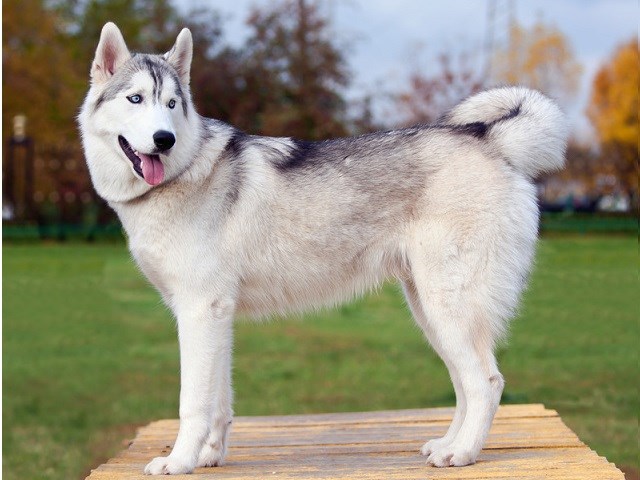Siberian Husky Breed Information
At a Glance
| Male Height | 21 - 24 inches |
| Female Height | 20 - 22 inches |
| Male Weight | 45 - 60 pounds |
| Female Weight | 35 - 50 pounds |
| Size | Medium |
| Colors | |
| Hypoallergenic | No |
| Personality | Alert, Cheerful, Gentle, Intelligent, Outgoing, |
| Lifespan | 12 - 14 years |
Introduction
The Husky is noted for its thickly furred double coat, erect triangular ears, and distinctive markings. The dog is a familiar family pet and still used by their owners as a working dog in colder climates. They are classed as a Spitz type dog. Dogs with different eye colors are not uncommon - one been blue and the other brown.
History
Huskies are a working dog breed that originated from the Anadyr River area in Siberia, Russia. Originally they were bred by the Chukchi people and adapted to live in the extreme cold of arctic. They were imported into Alaska in the early 1900s where they were used as sled dogs, aiding the exploration of America's last frontier.
Temperament
Huskies can best be described as active and energetic by their owners. they are a happy breed and known for their friendliness toward both family and strangers.
Coat
The Husky sports a thick straight layered coat. The undercoat is think and coarse and protects the dog in the cold. The outer layer is straight and reflective protecting the dog from the summer sun. The two layered coat enables the Husky to survive in temperatures at minus 50 centigrade. Colors vary from black and white to copper-red and white, grey and white through to pure white.
Do Huskys do well in Apartments?
They are not meant to be left alone for long periods of time. If left with no others around to occupy him or her, either the howling begins, the escape route is started, or something you really like is destroyed.
Barking
The Husky howls rather than barks. Barking problems can be a problem if the Husky is not properly socialized with other dogs or it is left alone for too long.
Do Huskys Get Along With Children & Other Pets?
Because the Siberian Husky had been raised in a family setting by the Chukchi and not left to fend for themselves they could be trusted with children. The ASPCA classifies the breed as good with children. The dogs hunted in pack and preyed on wild cats, birds, and squirrels, but with training can be trusted with other small animals.
Exercising a Siberian Husky
Huskies need to be taken on several walks each day for a good half an hour release some energy. In addition to walks. Often that will not be enough, they are high energy dogs and it is important that your dog get some park or yard time too. If you have a yard make sure it is well fenced, Huskies have a reputation as 'escape artists'. The Chukchi used to let them free range when not needed and some of that independent streak seem to be present in the modern day dog.
How to Groom a Siberian Husky
During the Spring and Fall, when they shed their undercoats you will have quiet a bit of work to do - make sure you purchase a suitable undercoat brush. Outside the molting period you will find that brushing will take much less of your time, and the coat can be kept shiny and healthy by brushing the dog a couple of times a week.
Husky and Shedding
Huskies shed year round, but are especially bad during the spring and fall when they shed their undercoat.
Husky Health Problems?
Health issues in the breed are mainly genetic, such as seizures and defects of the eye. Hip dysplasia can occur but is a rarity in this breed
Are Huskys Intelligent?
The Husky is regarded as an moderately intelligent dog. However it excels when putting its mind to escaping the backyard, so it is essential to have your yard well fenced.
Siberian Husky
A fifteen-minute daily obedience training class has been shown to serve well for Siberian Huskies.[18] Siberians need consistent training and do well with a positive reinforcement training program.
